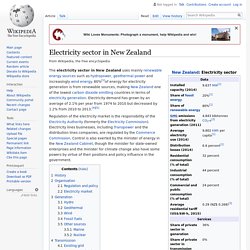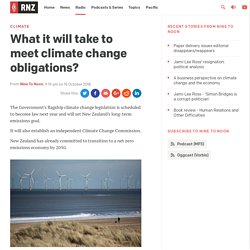

Renewable Energy Sources. Energy Efficiency. Plastic pariahs: Rise of the environmentally conscious shopper. A new trend sweeping supermarkets and restaurant's goes beyond saying no to a plastic bag, Ryan Dunlop explains.

They carry their own knives and forks to restaurants, and metal straws to bars. They take the reusable cup they keep in the office to the cafe across the road to get their morning coffee. They bring their own Tupperware for their takeaway sushi, and take mason jars to the supermarket to fill up on seeds and other bulk foods. When it's time to fill a prescription, they hand over a small container they've brought from home to the pharmacist. Meet the environmentally conscious shopper. The trend goes beyond just saying no to a plastic bag at a supermarket as more Kiwis become aware of the impact that plastic, especially single-use, is having on our oceans and environment. Cropping up at eateries nationwide is signage telling customers they won't automatically be provided plastic cutlery, or sachets of butter or tomato sauce. Many cafes sell glass or reusable plastic cups. Reduce Waste. Footprint article.
Sources of electrical energy - Ausgrid. Electrical energy is produced from many different energy sources.

Some of these energy sources are renewable and others are non-renewable. Power plants Most of the electricity used in Australia is made from power plants that burn fossil fuels to create steam. The main type of fuel used is coal, because it allows large amounts of electricity to be produced in one place. Coal currently accounts for over 70 per cent of Australia’s electric power. Renewable energy There are other ways of generating electricity by using natural resources that can be replaced or renewed without harming the environment or contributing to the greenhouse effect.
Presently 89 per cent of Australia’s electricity is generated from burning fossil fuels, 74 per cent from coal and 15 per cent from natural gas. Electricity sector in New Zealand. The electricity sector in New Zealand uses mainly renewable energy sources such as hydropower, geothermal power and increasingly wind energy. 80%[1]of energy for electricity generation is from renewable sources, making New Zealand one of the lowest carbon dioxide emitting countries in terms of electricity generation.

Electricity demand has grown by an average of 2.1% per year from 1974 to 2010 but decreased by 1.2% from 2010 to 2013.[4][5] History[edit] Initial use of electricity in New Zealand was associated with mining. The first industrial hydro-electric power plant was established at Bullendale in Otago in 1885, to provide power for a 20 stamp battery at the Phoenix mine. The plant used water from the nearby Skippers Creek, a tributary of the Shotover River.[6][7] While industrial use quickly took off, it was only government programmes in the first two thirds of the 20th century that caused private demand to climb strongly as well.
Organisation[edit] Regulation and policy[edit] New Zealand's Consumption - Energy Mix. 'Madness' to search for more fossil fuels, but can NZ pay the price of giving it up? Last updated 13:30, April 13 2018 Caption Settings Dialog Beginning of dialog window.

Escape will cancel and close the window. This is a modal window. This modal can be closed by pressing the Escape key or activating the close button. Video will play in 5 secondsPlay Now! Stop. Topic Explorer. Quit the oil drip: NZ can be the leader on fossil fuels the world desperately needs. Pressure is mounting on the government to halt oil and gas exploration.

If New Zealand can successfully wean itself off fossil fuels, we can only accelerate action in other countries, argues James Renwick The pressure is really going on at a political level in New Zealand these days. The Green Party is pushing to introduce a Zero Carbon Act and to create a Climate Commission, both of which are getting strong support from our new parliamentary commissioner for the environment Simon Upton. There’s a new public consultation process under way to help government decide where New Zealand should go with its pledges under the Paris Agreement. Just this week, the prime minister accepted a 45,000-signature petition aimed at stopping further oil and gas fossil fuels exploration around the country. What it will take to meet climate change obligations? The Government's flagship climate change legislation is scheduled to become law next year and will set New Zealand's long-term emissions goal.

It will also establish an independent Climate Change Commission. New Zealand has already committed to transition to a net zero emissions economy by 2050. The price of electricity generated by off shore wind has plummeted. Photo: AFP But the IPCC's latest landmark global warming report says we need to act much quicker than that. It might seem an impossible task but the UK has made deep cuts to its emissions in the last ten years. Since then the UK has cut its overall emissions by 43 percent from 1990 levels even though the economy has grown by 70 per cent from that base year. Chris Stark, chief executive of the UK's Committee on Climate Change, has been in New Zealand to address Auckland's Climate Change and Business conference.